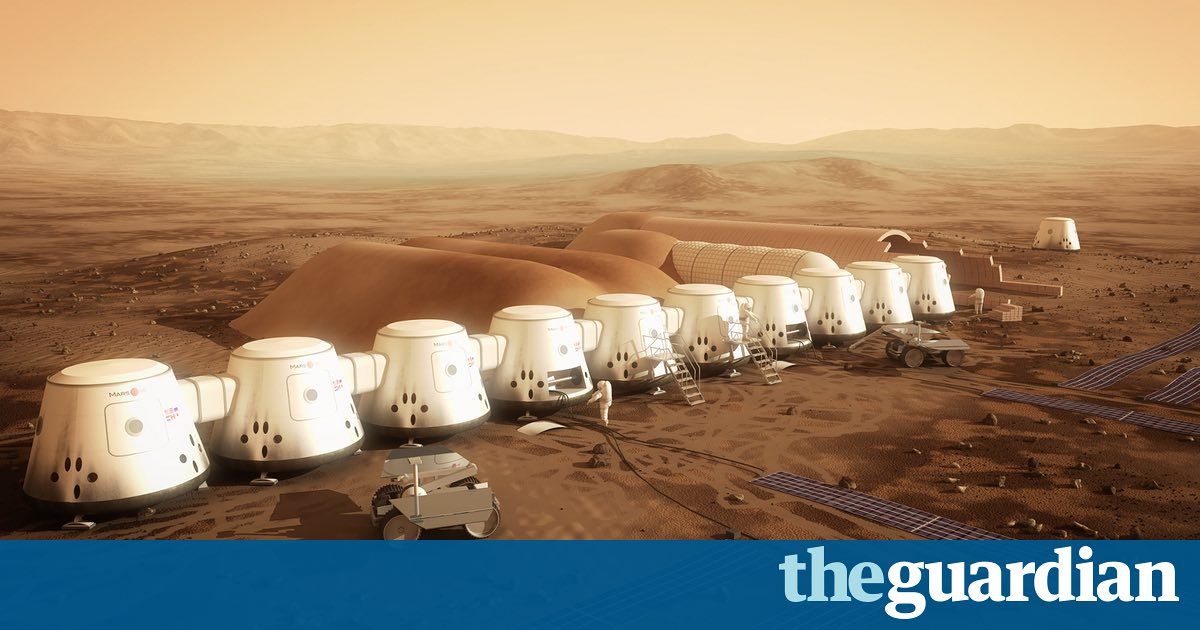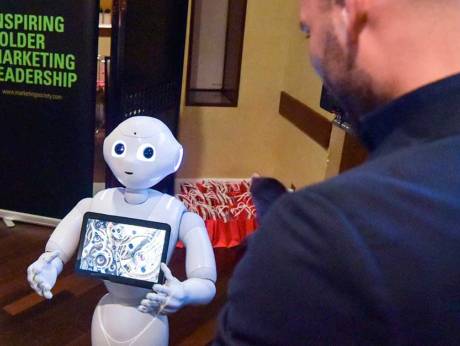We’ve had starchitects. Now we’ve got space architects. Oliver Wainwright meets the people measuring up the red planet for inflatable homes and farms made of moondust concrete.


With the need for smaller more cost effective living spaces in mind, Ori Systems has developed a line of modular furniture that makes the most of the space that is becoming more and more of a premium. And, though not yet applied outside the residential market, the technology has clear applications for maximizing precious office space as well.
The Ori in Ori Systems comes from the Japanese word origami, which makes a lot of sense when you see the furniture as it transforms a room with just the push of a button. And in so doing it can quickly transform a small living space with a variety of possible configurations. See the video below.


Powered by developments in exponential technologies, the cost of housing, transportation, food, health care, entertainment, clothing, education and so on will fall, eventually approaching, believe it or not, zero.
People are concerned about how AI and robotics are taking jobs, destroying livelihoods, reducing our earning capacity, and subsequently destroying the economy.
In anticipation, countries like Canada, India and Finland are running experiments to pilot the idea of “universal basic income” — the unconditional provision of a regular sum of money from the government to support livelihood independent of employment.
But what people aren’t talking about, and what’s getting my attention, is a forthcoming rapid demonetization of the cost of living.

Large Earth-orbiting greenhouses will someday likely be as commonplace as peanut acreage on Georgia’s coastal plains.
Low-Earth orbit (LEO) would hardly appear to be the best place to take up farming. But both NASA and the burgeoning commercial space industry are already planning for a time when in addition to on-orbit space hotels and new research stations, there will also be Earth-orbiting greenhouses. Such structures will provide a horn of plenty for growing numbers of LEO residents and astronauts venturing beyond Earth orbit to the Moon, Mars or even the Main Asteroid Belt.
The initial case for LEO agriculture would be to feed a growing population of space-dwellers — either using a greenhouse that remained permanently attached to the LEO habitat, or a greenhouse that was free-flying and uncrewed.
Here are five reasons why Earth-orbiting space greenhouses make sense.
Satya Nadella bounded into the conference room, eager to talk about intelligence. I was at Microsoft’s headquarters in Redmond, WA, and the company’s CEO was touting the company’s progress in building more intelligent apps and services. Each morning, he told me, he puts on a HoloLens, which enables him to look at a virtual, interactive calendar projected on a wall of his house. Nadella appeared giddy as he described it. The system was intelligent, productive, and futuristic: everything he hopes Microsoft will be under his leadership.
No matter where we work in the future, Nadella says, Microsoft will have a place in it. The company’s “conversation as a platform” offering, which it unveiled in March, represents a bet that chat-based interfaces will overtake apps as our primary way of using the internet: for finding information, for shopping, and for accessing a range of services. And apps will become smarter thanks to “cognitive APIs,” made available by Microsoft, that let them understand faces, emotions, and other information contained in photos and videos.
Microsoft argues that it has the best “brain,” built on nearly two decades of advancements in machine learning and natural language processing, for delivering a future powered by artificial intelligence. It has a head start in building bots that resonate with users emotionally, thanks to an early experiment in China. And among the giants, Microsoft was first to release a true platform for text-based chat interfaces — a point of pride at a company that was mostly sidelined during the rise of smartphones.

First installations go live as INTASAVE Energy pursues $30M impact investment.
Villagers in Lemolo B and Echareria in Nakuru County, Kenya, are waking up today to a new future as new solar nano-grids installed over the last two weeks allows them to switch on lights and operate new agri-processing machinery. The two communities are the first to receive a revolutionary new model for clean, affordable and reliable energy where a central solar hub provides both commercial energy for new village enterprises and household energy using cutting-edge up-cycled laptop batteries. The hub allows energy to be shared between households, businesses and the community bringing economic, social and environmental benefits.
The installation is the start of a major INTASAVE Energy solar nano-grid initiative (SONG) that ultimately aims to bring the benefits now beginning for villagers in Lemolo B and Echareria to over 450,000 people across the globe. INTASAVE Energy has launched a $30M impact investment programme to make this goal a reality.

With Singapore planning to 3D print public housing and the fascinating 3D Print Canal House in Amsterdam, the concept of 3D printed houses is hardly new. But as a result of a Freeform Home Design Challenge hosted by a Tennessee-based startup Branch Technology, the world will see its first freeform 3D printed house called ‘Curve Appeal’ by first half of 2017.

I have been helping by advising various companies across multiple industries plan & prep for more on boarding of bot technology as part of their own IT infrastructure and application layer. What I have seen companies who are at a turning point for their applications and infrastructure are wanting to invest in more automation meaning more online bot technology so that the resources that they currently have can be scaled to focus on new products & services innovation to help IT become a profit center & deploy commercial services and products to the company’s external customers.
We’re at the cusp of a sharp rise in devices that have no screen but do have conversational voice controls, such as the Amazon Echo. Smart home and Internet-of-things (IoT) objects that respond to users’ voices will improve and become more intuitive with further iterations and wider adoption.
Already they can, for example, dim the lights in a room and play a favorite song. With practice, and, by the virtues of machine learning, these user experiences will become ever more intuitive, capable, and innate.
Beyond the IoT, brands are seeing bots as a new type of media – one that can be harnessed to expand a company’s reach to new customers and networks. As brands use bots more and more to handle customer interactions, make recommendations, and help fulfill requests, those brands and the bots themselves also absorb insights about customer behaviors and needs.
I need these for my home.
The latest robot from Boston Dynamics can do all your chores for you—with its face.
Meet SpotMini.